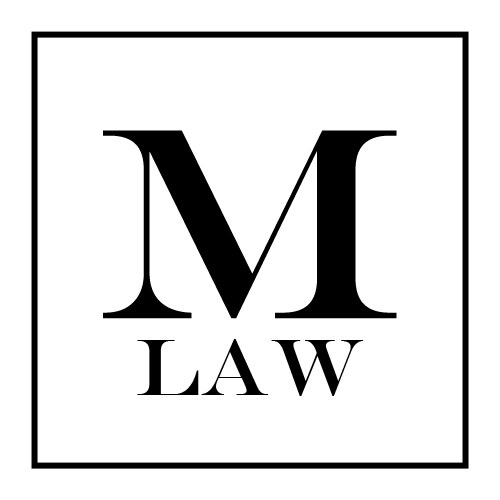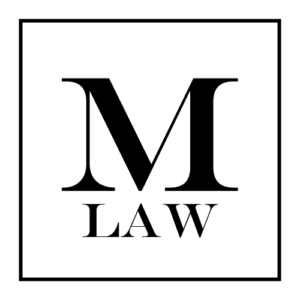Merson Law Review: VOL. II NO. 10 November 2, 2022
Editor in Chief: Steven E. North, Esq.
Case Editor: Emily C. Vaught, Esq.
Guest Commentary: Avery Abel, Law Clerk
1. A PRIMER ON ATTORNEY-CLIENT PRIVILEGE
Brawer v. Lepor, 2022 NY Slip Op 50694(U) (Sup. Ct. N.Y. Cnty. July 29, 2022) [linked here]
Background: In this commercial action the plaintiff moved to compel disclosure of several documents withheld by the defendant. The defendant claimed that the documents were properly withheld as they constituted attorney work product, documents prepared in anticipation of litigation, and documents covered by the attorney client privilege. The plaintiff argued, among other things, that the fiduciary exception and the crime-fraud exception justified disclosure of the otherwise privileged communications.
Holding: The court (Robert R Reed, J.), who review the documents in camera, granted in-part the motion holding that communications do not automatically obtain privilege status merely because they were created or communicated by an attorney. Citing to Spectrum Sys. V. Chem. Bank, 157 A.D.2d 444 (1st Dept. 1990) [linked here]. The court noted that, “[o]nly if the communications are transmitted in the course of professional employment, that convey a lawyer’s assessment of the client’s legal position, does the privilege apply.” Accordingly, communications between defense counsel and the defendant were privileged, but invoices, fee arrangements and engagement letters between the attorney and client were not.
Editors’ Note: This case includes a worthwhile discussion of numerous principles relating to the attorney-client privilege in a corporate setting. It covers communications with experts, third parties, multiple clients, and the “fiduciary” and “crime/fraud” exceptions. The court noted, among other things, that “caution must be exercised to prevent the mere participation of an attorney in an internal investigation from being used to seal off disclosure”.
2. SPOLIATION SANCTIONS – STRIKE PLEADINGS OR ADVERSE PRESUMPTION?
Dragro Assoc. II, LLC v. Chevron U.S.A., Inc., 2022 NY Slip Op 03884 (2d Dept. June 15, 2022) [linked here]
Background: The plaintiff commenced an action against the defendants alleging that they discharged petroleum from underground storage tanks on the plaintiff’s property. The defendants moved to strike the complaint on the ground of spoliation of evidence in that the plaintiff disposed of the tanks after its expert had inspected them and before the defendants had an opportunity to examine them. The court (Linda S. Jamieson, J.) granted the motion and dismissed the complaint.
Holding: The appellate court modified the holding of the trial court. The Court held that the defendants demonstrated that the plaintiff had an obligation to preserve the tanks at the time they were disposed of. However, the Court determined that the defendants failed to establish that their ability to prove a defense was fatally compromised by the destruction of the tanks, or that the destruction of the tanks was willful and contumacious. Under such circumstances, the court held that striking the complaint was too drastic of a sanction; rather, a lesser sanction of directing that an adverse inference charge be given is warranted.
Editors’ Note: Under the common-law doctrine of spoliation, when a party negligently loses or intentionally destroys key evidence, the responsible party may be sanctioned. See N.H.R. v Deer Park Union Free Sch. Dist., 180 A.D.3d 823 (2d Dept. 2020) [linked here]. “A party that seeks sanctions for spoliation of evidence must show that the party having control over the evidence possessed an obligation to preserve it at the time of its destruction, that the evidence was destroyed with a culpable state of mind and that the destroyed evidence was relevant to the party’s claim or defense such that the trier of fact could find that the evidence would support that claim or defense.” Id. at 824.
3. THREE DAY LATE NOTICE OF CLAIM DENIED AS UNTIMELY EVEN THOUGH NO PREJUDICE
Matter of Ortiz v. Westchester County, 2022 NY Slip Op 04807 (2d Dept. Aug. 3, 2022) [linked here]
Background: The petitioner served a notice of claim on the Department of Housing and Buildings and the City of Yonkers 93 days after she slipped and fell in one of their buildings. Two weeks after the filing of the notice the appellants rejected it as untimely. Nine months later, the petitioner commenced a proceeding to deem the notice of claim timely, or in the alternative, to permit the serving and filing of a late notice of claim. The court (Linda S. Jamieson, J.) granted the petition.
Holding: The appellate court reversed, holding that even if it were to excuse the petitioner’s initial two- or three-day delay in serving a notice of claim after the expiration of the 90-day period, the petitioner failed to demonstrate a reasonable excuse for the additional nine-month delay between the time the appellants rejected the notice of claim as untimely and the commencement of the proceeding. The Court further held that the appellants did not acquire actual knowledge of the essential facts constituting the claim within 90 days after the claim arose or a reasonable time thereafter even though there was a police accident report prepared at the time which reflected the accident but not its cause. Accordingly, the court held that the petition to allow the late filing was unwarranted due to the lack of reasonable excuse, the time elapsed, and the respondent’s lack of actual knowledge of the essential facts giving rise to the claim. The fact that appellants apparently suffered no prejudice from the delay was simply insufficient to allow a late notice of claim under these circumstances.
Editors’ Note: A notable feature of this case is the nine-month delay in moving for permission to file the late notice of claim after the claim had been rejected by the respondent. Had that motion been made sooner the outcome might have been different.
4. OPEN AND OBVIOUS DEFECT NOT ACTIONABLE
DiScalo v. Mannix Family Mkt. @ Forest & Richmond Ave., LLC, 2022 NY Slip Op 03708 (2d Dept. June 8, 2022) [linked here]
Background: The plaintiff commenced a personal injury action for injuries sustained when she slipped and fell on a flattened cardboard box that was lying on the floor in an aisle of the defendant’s grocery store. At the plaintiff’s deposition, she testified that she saw the piece of cardboard prior to her fall, and that she had intended to step onto it in order to reach a product on a nearby shelf. The defendant moved for summary judgment, arguing that the condition on which the plaintiff slipped and fell was open and obvious, and not inherently dangerous. The court (Ralph J. Porzio, J.) denied the motion.
Holding: The appellate court reversed. The Court held that the defendant established its prima facie entitlement to judgment as a matter of law dismissing the complaint by submitting evidence demonstrating that the flattened cardboard box, which was readily observable to the plaintiff prior to her fall, was open and obvious, and not inherently dangerous. While a possessor of property has a duty to maintain that property in a reasonably safe condition, there is no duty to protect or warn against an open and obvious condition that, as a matter of law, is not inherently dangerous.
EMERGENCY VEHICLES
Under the New York State Vehicle and Traffic Law (“VTL”), operators of motor vehicles are liable for injuries caused by their negligent driving. As in most cases, there is an exception. Drivers of emergency vehicles such as ambulances, fire trucks, and police cars are exempt from liability when engaged in “emergency operations.” Kabir v. County of Monroe, 16 N.Y.3d 217 (2011). Such operators are generally entitled, when necessary, to drive over the speed limit, run red lights and practice other forms of unsafe driving when responding to an emergency operation.
Nevertheless, VTL §1104(e) provides that an emergency vehicle driver has a “duty to drive with due regard for the safety of all persons, nor shall such provisions protect the driver from the consequences of his reckless disregard for the safety of others.”
The reckless disregard standard makes it challenging for a plaintiff to prevail in a lawsuit against the operator of an emergency vehicle. For a plaintiff to succeed in such a suit, the plaintiff must prove that the driver “has intentionally done an act of unreasonable character in disregard of a known or obvious risk that was so great as to make it highly possible that harm would follow.” Saarinen v. Kerr, 84 N.Y. 2d 494 (1994). Courts weigh various factors surrounding an accident with an emergency vehicle, including: the conditions of the road, the driving policies of the department involved, the urgency of the situation, and the precautionary measures taken by the driver. Frezzell v. City of New York, 24 N.Y.3d 213 (2014)
When such drivers do not take precautionary measures, it is likely that they will be found to have acted with reckless disregard. McElhinney v. Fitzpatrick, 193 A.D.3d 1409 (4th Dep’t 2021). Here, the court denied the police officer’s motion for summary judgement when it found that there was evidence that the officer acted recklessly when he collided with the plaintiff’s vehicle. Although the officer was responding to an “urgent emergency situation”, he was driving seventy miles per hour in a thirty-five miles per hour speed zone, did not have his sirens or lights on and accelerated when he hit the plaintiff’s vehicle. The court found that no precautionary measures at all were taken by the officer to avoid the accident.
Although a plaintiff can succeed in an action against an emergency vehicle operator, the reckless disregard standard is difficult to meet. In situations where it can be established that the emergency vehicle’ s lights and sirens were not activated1, the driver did not take any other precautionary measures, was excessively and unnecessarily speeding and the driver acted in violation of its department’s driving policies the plaintiff is more likely to succeed.
1. See Haque v. City of NY, 2022 NY Slip Op 31945(U) (Sup.Ct. NY County 2022) (Court held that the lights and sirens were material to the case and denied the defendant’s motion for summary judgment.)
Merson Law Review: VOL. II NO. 10 November 2, 2022 (PDF)





